
Court House Square is the location of Charleston County Courthouse in downtown Charleston, South Carolina, at the intersection of Meeting and Broad Streets. It is historically known as "the Four Corners of Law" because the intersection hosted buildings from each level of government: the Courthouse, City Hall, the Federal Building and U.S. Post Office, and Saint Michael's Episcopal Church.

The Charleston Museum is a museum located in the Wraggborough neighborhood in Charleston, South Carolina. It is one of the oldest museums in the United States. Its highly regarded collection includes historic artifacts, natural history, decorative arts and two historic Charleston houses. It replaces the Old Charleston Museum that burned down due to unknown causes.

The Charleston Harbor is an inlet of the Atlantic Ocean at Charleston, South Carolina. The inlet is formed by the junction of Ashley and Cooper rivers at 32°49′7.10″N79°55′40.41″W. Morris and Sullivan's Islands shelter the entrance. Charleston Harbor forms part of the Intracoastal Waterway.
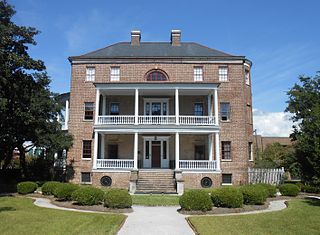
The Joseph Manigault House is a historic house museum in Charleston, South Carolina that is owned and operated by the Charleston Museum. Built in 1803, it was designed by Gabriel Manigault to be the home of his brother, and is nationally significant as a well-executed and preserved example of Adam style architecture. It was declared a National Historic Landmark in 1973.

The U.S. Post Office and Courthouse is a historic post office and courthouse located at Charleston in Charleston County, South Carolina. The building and its annexes serve the federal court for the Charleston Division of the United States District Court for the District of South Carolina. The building was listed on the National Register of Historic Places in 1974.

Historic Charleston Foundation (HCF) was founded in 1947 to preserve and protect the integrity of architectural, historical and cultural heritage of Charleston, South Carolina, United States. The Foundation undertakes advocacy, participation in community planning, educational and volunteer programs, the preservation of historic places, research, and technical and financial assistance programs for the preservation of historic properties. Winslow Hastie has been the President & CEO of Historic Charleston Foundation since 2018.

Albert Wheeler Todd was an architect in Charleston, South Carolina. He is known for his neoclassical architecture, the design on his own home and of a home for Tristram Hyde. Todd was the senior partner at the firm of Todd & Benson which became Todd, Simons & Todd. Joseph F. Leitner worked with him. Todd also served in the legislature from 1910 until 1924 and was a State Senator.
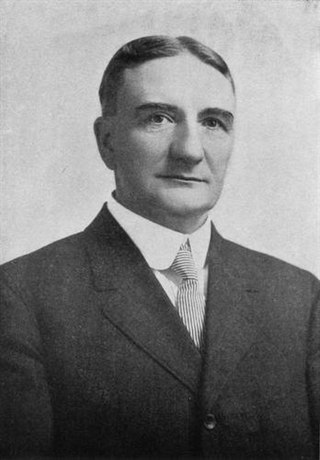
Tristram Tupper Hyde was the mayor of Charleston, South Carolina, from 1915 to 1919.
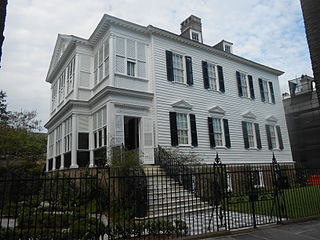
The William Washington House is a pre-Revolutionary house at 8 South Battery, Charleston, South Carolina. It is the only pre-Revolutionary house on Charleston's Battery. Thomas Savage bought the lot at the southwest corner of Church St. and South Battery in 1768 and soon built his house there. The resulting structure is a nationally important, Georgian style, square, wooden, two-story house on a high foundation.

The Charles Graves House is a three-story brick residence constructed for Charles Graves at 123 Tradd Street in Charleston, South Carolina. The roof has a hip in it and the details exhibit styling of the Federal architecture period.

The Richard Brenan House is an early 19th-century house at 207 Calhoun St., Charleston, South Carolina. The house was built for Richard Brenan, a merchant, in 1817 and originally included the adjacent land to the west. The house is a three-story Charleston single house with quoins and fine cornice. The house was a two-story piazza on the west side.
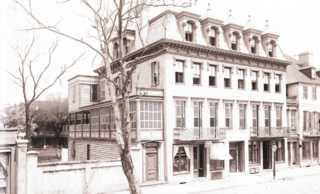
The Confederate Home is a retirement home located in an early 19th-century building at 60 Broad Street in Charleston, South Carolina. The building started as a double tenement in about 1800, built for master builder Gilbert Chalmers. From 1834 to 1867, it was operated as the Carolina Hotel by Angus Stewart. In 1867, sisters Mary Amarinthia Snowden and Isabell S. Snowden established the Home for the Mothers, Widows, and Daughters of Confederate Soldiers and operated their housing program at the house.
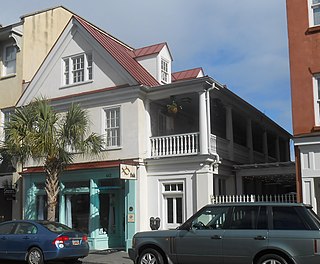
The James Ferguson House at 442 King St., Charleston, South Carolina, is an antebellum house dating to at least 1840. As of 2000 it was being used as a restaurant.
John P. Grace was the fifty-first mayor of Charleston, South Carolina, completing two, nonconsecutive terms from 1911 to 1915 and then 1919 to 1923.
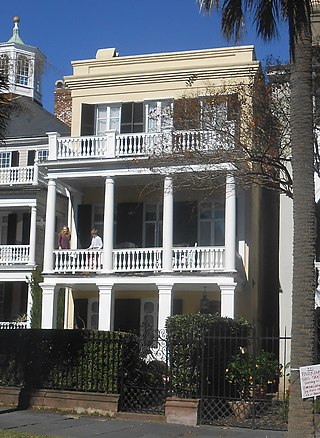
The James Spear House is a historic home in Charleston, South Carolina along Charleston's Battery. The property upon which the house was built was acquired by James Spear in 1860 for $5,000; a plat connected with the sale does not reveal any improvements to the lot. However, by the time of a municipal census conducted in 1861, Spear was already occupying the house.

The Col. John A.S. Ashe House is a historic home in Charleston, South Carolina along Charleston's Battery. Col. John A.S. Ashe, Jr. received the property upon which 26 South Battery is built upon his father's death in 1828 along with $10,000 for the construction of a house. Col. John A.S. Ashe, Jr.'s father had built the nearby Col. John Ashe House at 32 South Battery in the 1780s.

The Thomas Elfe house is a property located in the French Quarter at 54 Queen Street in Charleston, South Carolina. It was at one time owned by the well known colonial period furniture craftsman Thomas Elfe, whence its name. It is a colonial Georgian style house and a perfectly scaled miniature of a Charleston single house. The eighteenth century house has been completely restored. It is now referred to as the Thomas Elfe Workshop.
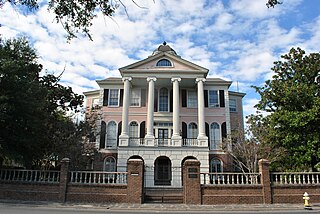
The Faber-Ward House is a historic three-story home in Charleston, South Carolina. Henry F. Faber built the house about 1832 in a Palladian style reminiscent of Southern plantations. The house was converted into a hotel for African-Americans after the American Civil War and then a middle-class residence.
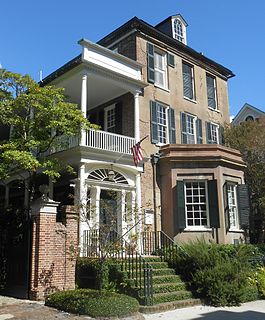
The Robert Pringle House is a historic house in Charleston, South Carolina.

Constructed about 1810, in the Federal style, for George Chisolm (1772-1835), a factor, the two-and-one-half story George Chisolm House is the first house to have been built upon the landfill project that formed Charleston, South Carolina's Battery. The garden to the south of the house was designed by Loutrel Briggs, and later modified by Sheila Wertimer. The address is 39 East Bay Street; it formerly was 39 East Battery Street.



















